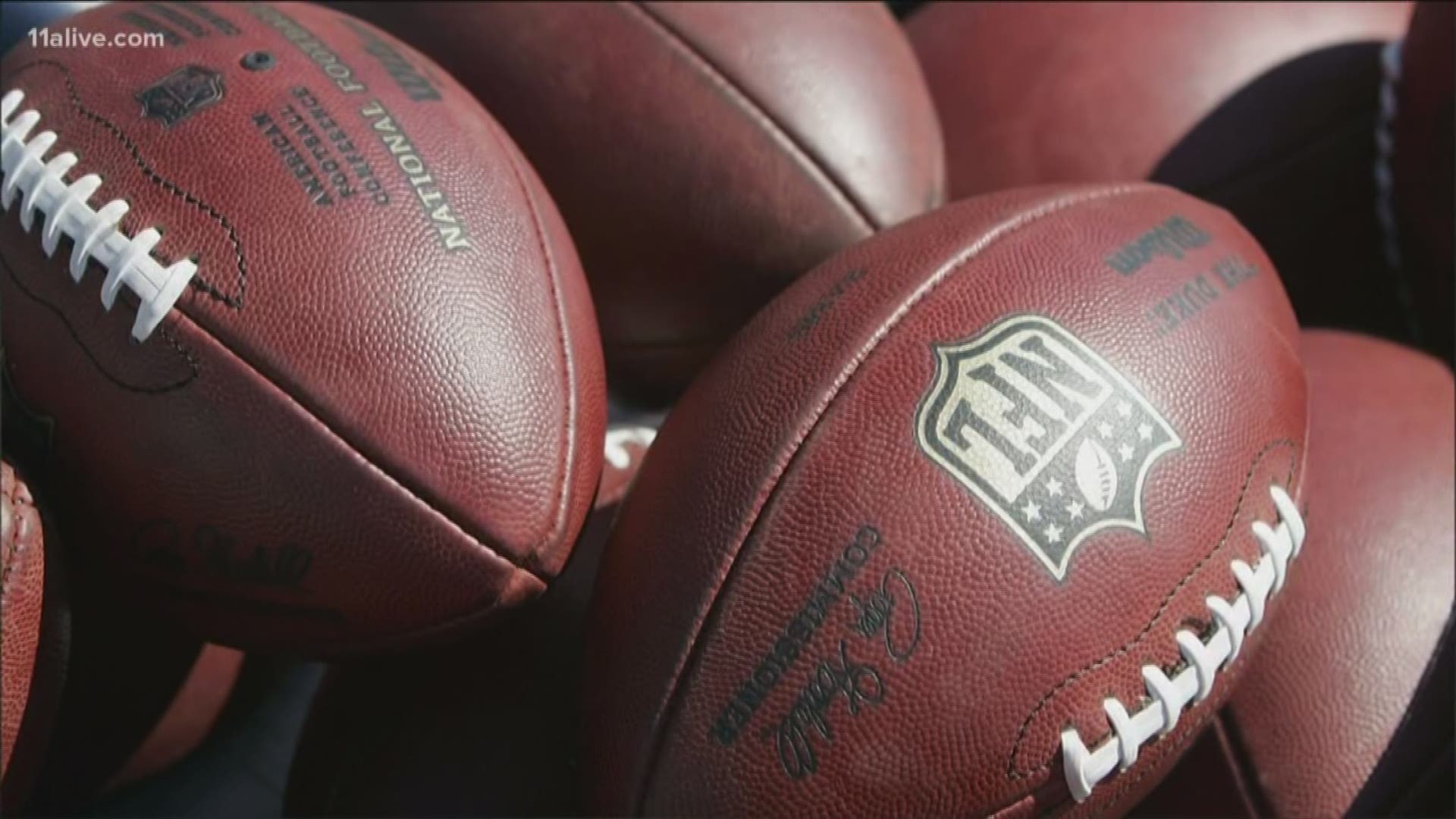ATLANTA — This weekend’s Super Bowl will involve a unique prolate spheroid ball.
To endure a professional football season, an athlete has to be in tip top shape. The shape of the ball itself has a history that goes more than 100 seasons.
By definition, a ball is round or roundish. Baseballs, tennis balls, and basketballs are all round.
An American football would be considered roundish.
Here’s why it has a shape that is unique to the balls used in other popular American sports.
The sport of football dates back to the late 1800s, when the game was a loose combination of rugby and soccer. At that time, the ball was made from an inflated pig’s bladder. The bladders were generally semi-round, but because they were difficult to inflate, no two footballs looked the same.
The folks at Wilson Sporting Goods tell us changes in the game led to changes in the shape of the ball.
In 1906, college football’s rules committee approved the use of the forward pass. Players needed a ball that was less round and more aerodynamic.
The ball was reshaped from semi-round into a prolate spheroid.
Instead of a pig bladder, synthetic rubber is now used for the inside of the ball. It’s all covered in leather and bundled using vinyl stitching.
The pointed ends of the ball make it easier to grip with one hand in order to spiral the ball toward a receiver.
Wilson supplies footballs to the NFL and, therefore, the Super Bowl.
While there haven’t been any significant changes to the shape of the football for many years, Wilson has made minor tweaks to everything from the pebbled surface of the leather to the height of the laces.
The company churns out about 3,000 prolate spheroid footballs a day at its factory in Ada, Ohio.
MORE WHY GUY

